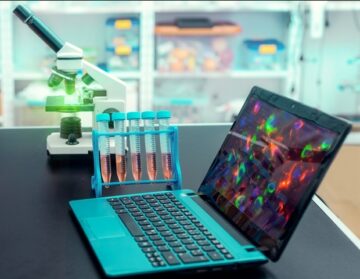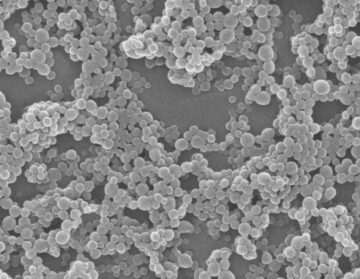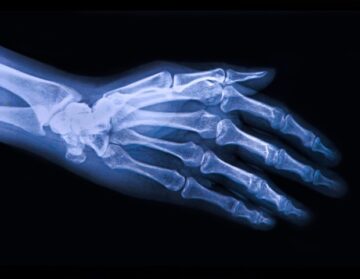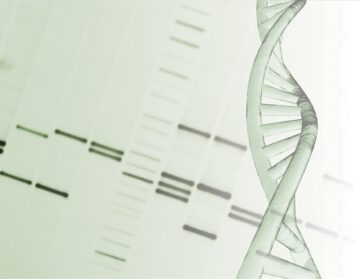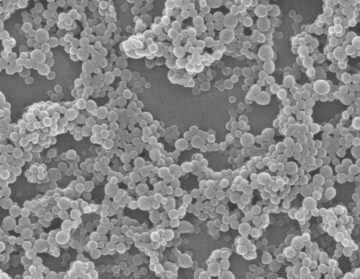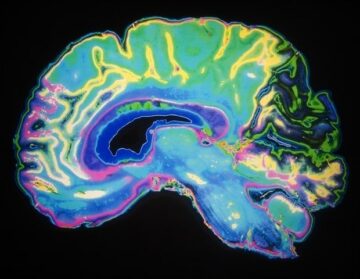In a recent study published in Communications Materials, scientists reviewed current research on using wearable breath sensors to monitor respiratory parameters such as temperature, airflow, and humidity, and to detect various respiratory biomarkers.
They also examined the use of these sensors in detecting diseases and observing breathing patterns.
 Study: Recent developments in wearable breath sensors for healthcare monitoring. Image Credit: metamorworks/Shutterstock.com
Study: Recent developments in wearable breath sensors for healthcare monitoring. Image Credit: metamorworks/Shutterstock.com
Background
Clinical diagnoses have often used breath analysis to make inferences about systemic health.
Breath analysis provides a non-invasive method of detecting and analyzing the various chemical signatures in exhaled breath, including the presence of semi-volatile and volatile organic molecules, lipids, proteins, viruses, bacteria, and deoxyribonucleic acid (DNA), which are indicators of pathological and physiological states.
Rapid advances in medical technology, nanotechnology, and material science have resulted in a wider range of wearable devices that contain intelligent sensors to monitor physiological parameters.
With the addition of machine learning algorithms, these devices have a wide range of monitoring capabilities. The development of wearable breath sensors, such as small patches and sensors within masks, allows breath data to be collected and analyzed continuously in real-time.
In this review, the researchers discussed the traditional methods of breath analysis and the recent developments in wearable breath analysis devices that can be used to perform real-time monitoring of systemic health.
Breath analysis methods
The review evaluated the various methods of breath capture or sampling that came under the broad categories of breath exhaled directly into the equipment or device or collected using a polymer bag or other types of containers.
Some of these devices are incorporated into face masks, providing a portable method to collect exhaled breath condensate and exhaled breath aerosol samples.
With the sudden increase in face masks due to the coronavirus disease 2019 (COVID-19) pandemic, flexible breath collector membranes such as those made using porous polycarbonate are being extensively explored to develop wearable breath collection devices.
The researchers discussed various methods, such as solid phase microextraction, thermal desorption tubes, and needle trap methods, used to develop wearable breath sampling devices.
The review also discussed conventional breath analysis methods such as selected-ion flow-tube mass spectrometry, gas chromatography coupled with mass spectrometry, and proton-transfer-reaction mass spectrometry. Recent studies have also explored methods such as those using optical absorption spectroscopy and surface-enhanced Raman scattering, which have proved to be effective in biomarker detection in breath samples.
Electrochemical methods using materials such as carbon nanotubes provide alternate methods for analyzing gas and volatile organic compounds.
Biomarker detection
Although conventional breath analyzing techniques provide a quantitative analysis method of biomarkers with high specificity and sensitivity, the cumbersome instruments and high costs hinder accessibility and limit their scope of applications.
Wearable breath sensory devices with integrated methods to detect biomarkers allow real-time monitoring with ease and comfort.
These devices can analyze various biomarkers such as oxygen, ammonia, carbon dioxide, hydrogen peroxide, and numerous pathogens. Drastic changes in oxygen levels can help identify hyperoxia or hypoxia — both indicators of ill health.
Similarly, hypercapnia and hypocapnia — an excess or deficit of carbon dioxide in the breath, respectively — are indicators of respiratory acidosis or alkalosis, both of which can regress into serious health conditions and respiratory arrest.
An increase in ammonia levels in breath is an indicator of kidney and liver disease or disorders related to the urea cycle. Hydrogen peroxide in exhaled breath often indicates oxidative stress and inflammation in the airways.
The review also found that recent research has focused on developing respiratory masks with breath sensors to detect respiratory viruses such as severe acute respiratory syndrome coronavirus 2 (SARS-CoV-2).
Monitoring respiratory parameters
Apart from biomarkers, wearable breath sensors can also provide continuous real-time monitoring of health parameters such as temperature, airflow, and moisture content of exhaled breath, which are all vital indicators of overall health.
Airflow and humidity monitoring wearable sensors are based on either resistive or capacitive airflow. Airflow sensors can also be self-powered using the triboelectric or piezoelectric effect. Temperature sensors utilize thermistors with nickel oxide nanoparticles, or calorimetric or pyroelectric sensors.
Conclusions
To summarize, the review examined existing and current research on wearable breath-analyzing devices and comprehensively discussed a wide range of applications of these devices, including the real-time and continuous sampling and analysis of biomarkers and respiratory parameters that are indicators of disease and ill health.
- SEO Powered Content & PR Distribution. Get Amplified Today.
- PlatoData.Network Vertical Generative Ai. Empower Yourself. Access Here.
- PlatoAiStream. Web3 Intelligence. Knowledge Amplified. Access Here.
- PlatoESG. Carbon, CleanTech, Energy, Environment, Solar, Waste Management. Access Here.
- PlatoHealth. Biotech and Clinical Trials Intelligence. Access Here.
- Source: https://www.news-medical.net/news/20240326/Emerging-trends-in-wearable-breath-sensors-aim-at-personalized-healthcare-solutions.aspx
- :has
- :is
- 2%
- 200
- 2000
- 2019
- 66
- a
- About
- accessibility
- acute
- addition
- advances
- aim
- airways
- algorithms
- All
- allow
- allows
- also
- Ammonia
- an
- analysis
- analyze
- analyzed
- analyzing
- and
- applications
- ARE
- arrest
- AS
- At
- Bacteria
- bag
- based
- BE
- being
- biomarker
- biomarkers
- both
- Breath
- breathing
- broad
- came
- CAN
- capabilities
- capture
- carbon
- carbon dioxide
- carbon nanotubes
- categories
- Changes
- chemical
- collect
- collected
- collection
- collector
- COM
- comfort
- conditions
- contain
- Containers
- content
- continuous
- continuously
- conventional
- Coronavirus
- Costs
- coupled
- COVID-19
- credit
- cumbersome
- Current
- cycle
- data
- DEFICIT
- detect
- detecting
- Detection
- develop
- developing
- Development
- developments
- device
- Devices
- diagnoses
- directly
- discussed
- Disease
- diseases
- disorders
- dna
- due
- ease
- effect
- Effective
- either
- emerging
- end
- equipment
- evaluated
- excess
- existing
- Explored
- extensively
- Face
- face masks
- flexible
- focused
- For
- found
- from
- GAS
- Have
- Health
- healthcare
- height
- help
- High
- hinder
- HTTPS
- hydrogen
- identify
- image
- in
- Including
- Incorporated
- Increase
- indicates
- Indicator
- Indicators
- inflammation
- instruments
- integrated
- Intelligent
- into
- jpg
- kidney
- learning
- levels
- LIMIT
- Liver
- machine
- machine learning
- made
- make
- Masks
- Mass
- material
- materials
- medical
- method
- methods
- Middle
- Mobile
- Monitor
- monitoring
- nanotechnology
- Nature
- Nickel
- numerous
- observing
- of
- often
- on
- optical
- or
- organic
- Other
- overall
- oxidative
- Oxygen
- pandemic
- parameters
- Patches
- patterns
- perform
- Personalized
- phase
- plato
- Plato Data Intelligence
- PlatoData
- polymer
- portable
- presence
- Proteins
- proved
- provide
- provides
- providing
- published
- quantitative
- range
- real-time
- recent
- reference
- related
- research
- researchers
- respiratory
- resulted
- review
- reviewed
- SARS-CoV-2
- Science
- scientists
- scope
- Sensitivity
- sensors
- serious
- severe
- Signatures
- small
- solid
- Solutions
- Sources
- specificity
- Spectroscopy
- States
- stress
- studies
- Study
- such
- sudden
- summarize
- systemic
- techniques
- Technology
- that
- The
- their
- thermal
- These
- this
- those
- thumbnail
- to
- traditional
- Trends
- types
- under
- URL
- use
- used
- using
- utilize
- various
- viruses
- vital
- volatile
- wearable
- wearable devices
- which
- wide
- Wide range
- wider
- with
- within
- zephyrnet


